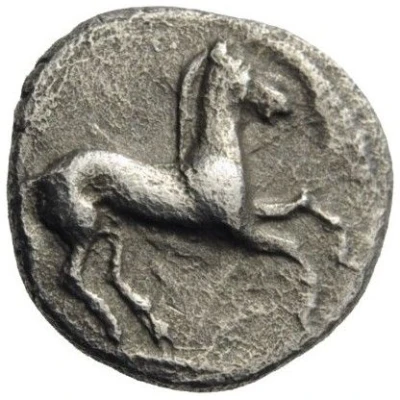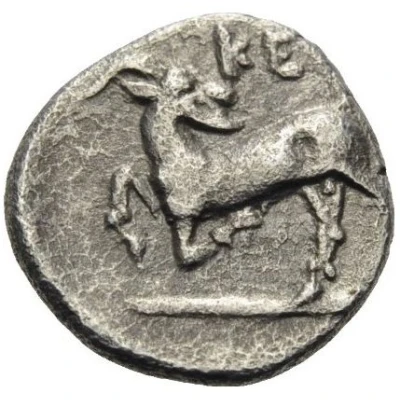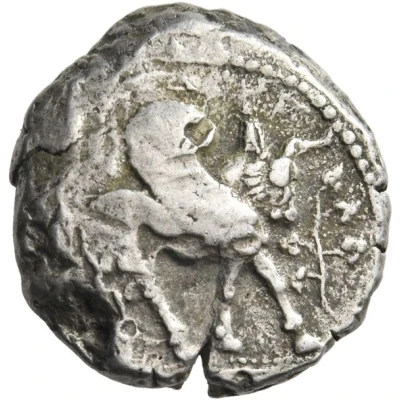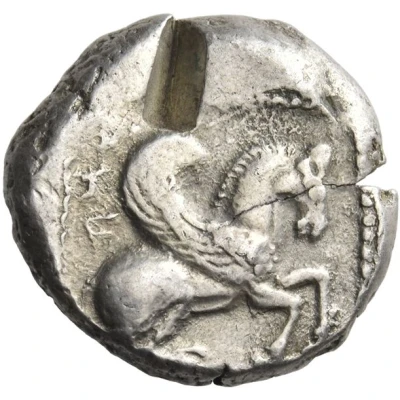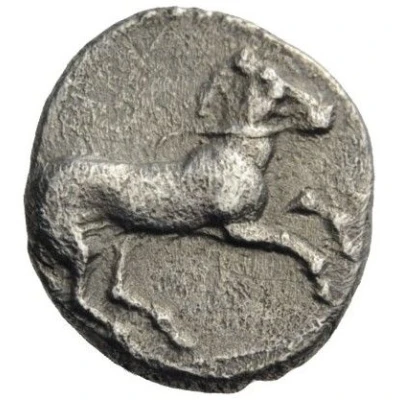
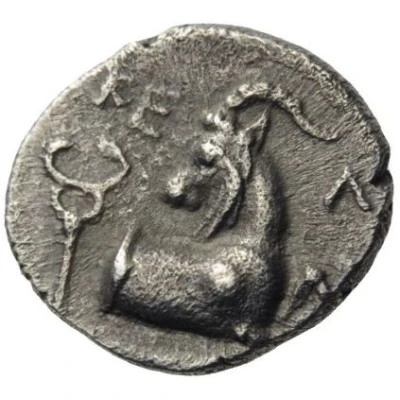

© Nomos AG
Obol 400 BC - 350 BC
| Silver | 0.73 g | 9 mm |
| Issuer | Kelenderis (Cilicia) |
|---|---|
| Type | Standard circulation coin |
| Years | 400 BC - 350 BC |
| Value | Obol (⅙) |
| Currency | Drachm |
| Composition | Silver |
| Weight | 0.73 g |
| Diameter | 9 mm |
| Shape | Round (irregular) |
| Technique | Hammered |
| Orientation | Variable alignment ↺ |
| Demonetized | Yes |
| Updated | 2024-10-09 |
| Numista | N#420442 |
|---|---|
| Rarity index | 100% |
Reverse
Forepart of goat to right, head turned back; to left, kerykeion.
Script: Greek
Lettering: KE Λ
Translation: Kelenderis
Interesting fact
One interesting fact about the Obol coin from Kelenderis (Cilicia) is that it features a unique combination of Greek and Persian influences in its design. The obverse side of the coin depicts a lion's head, which is a common motif in ancient Greek coinage, while the reverse side shows an incuse punch with a crescent moon and an eight-pointed star, which are symbols associated with the ancient Persian Empire. This blending of cultural influences reflects the complex history of the region and the interactions between different civilizations during that time.
